Have a Purpose for Each Session
Combat Sports are tough and physical, and while it may be tempting to push yourself to the limit on every session, in the long run, this approach will hinder your ability to excel in the long term.
Periodizing both the content and intensity of the session are important when structuring a week of training. For example, performing hard sparring 6 days a week will certainly result in overtraining and likely injury as well. A more appropriate approach may be to have 2 light/technical sessions during the week, 2 moderate/conditioning sessions, and 2 hard/sparring sessions. Splitting the week up this way will allow you to spend certain periods of the week on technical proficiency and others practicing the sport in a live situation.
Additionally, working on different aspects of your sport throughout the week will help prevent overuse and allow for higher intensity in each session. If, for example, a kickboxer works only on throwing hooks throughout the week, the shoulders, elbows, and wrists may take the excessive strain. Alternatively, making some days more boxing heavy and other days more kick heavy can spread the weekly volume throughout the body.
Incorporate Strength Training
Because combat sports competitions are generally centered around weight classes, there has been a bit of a stigma against weight training for combat sports athletes for fear of excessive weight gain or slowing down an athlete. What these athletes don’t consider, however, is that strength training does not necessarily equate to weight gain and can significantly improve an athlete’s durability.
When an athlete is competing in a sport that does involve weight classes, it is pertinent that he or she fills out that weight class with lean muscle tissue as much as possible. Even if you are comfortable at your current body weight, strength training (particularly in a lower rep range) can allow you to become stronger without gaining any size.
Additionally, strength training plays a critical role in injury prevention. Putting external load on your body in the form of resistance training improves the strength of your muscles, bones, tendons, and ligaments while also enhancing joint durability. By regularly exposing your soft tissues to load, you reduce the likelihood of these tissues becoming strained or torn.
Prioritize Sleep
Most individuals are aware that proper sleep quality and quantity are important for the body to recover physically and mentally but for combat athletes, sleep is non-negotiable. Combat sports are both very physically taxing as well as psychologically. Getting onto a jiu-jitsu mat, into a boxing ring, or into an octagon requires a high level of mental toughness as well as psychological prowess.
Because the stakes are so high in combat sports, it is extremely important that an individual take advantage of proper sleep to ensure that they are mentally sharp during every practice. In the world of combat sports, a mental lapse can mean the difference between getting punching in the face, strangled, or getting away safely.
Sleep will also aid in the muscular and nervous system to recover from hard bouts of training. Not only is tough, contact training hard on the body but also on the nervous system. Being in a combative situation usually leads to an increased sympathetic response from the nervous system (think fight or flight). This heightened state of awareness needs to offset with long bouts of parasympathetic activity (rest and digest), which can be provided by high-quality sleep.
Ensure Proper Nutrition and Hydration
One of the best ways to keep the body healthy and free from unwanted inflammation is to make good nutritional choices. Eating lean meats, fruits, vegetables, and healthy fats will ensure that your body has the proper fuel that it needs for every training session.
Caloric intake is also a critical piece of the nutrition equation when it comes to combat athletes with a high volume of training. While some, select individuals feel better keeping carbohydrate intake to a minimum, this macronutrient is responsible for providing your body with usable energy to be burned during training and daily activities. Carbohydrates are best consumed before and after training and both fuel the workout and allow you to recover from training.
Combat sports athletes are notorious for long training sessions and multiple sessions per day. This means that not only are their bodies losing a lot of water but electrolytes as well. If an athlete is training for more than 90 minutes per day, it is imperative that he or she include electrolytes in their re-hydration beverage to ensure that not only water but minerals are properly replenished.
Listen to your body
As an athlete or even an avid-hobbyist, it is sometimes too easy to ignore your body and “train through pain”. This approach, unfortunately, leads to a number of nagging injuries as well as a significantly increased likelihood of serious injury that can take you out of training for months. If you are experiencing consistent or worsening pain in an area of your body, it is always better to have the area checked out by a professional, rather than waiting until it is too late.
If you are a combat sports participant looking for a sports-centered chiropractic physician to help keep you healthy, please reach out to our office, we’d love to help you!


